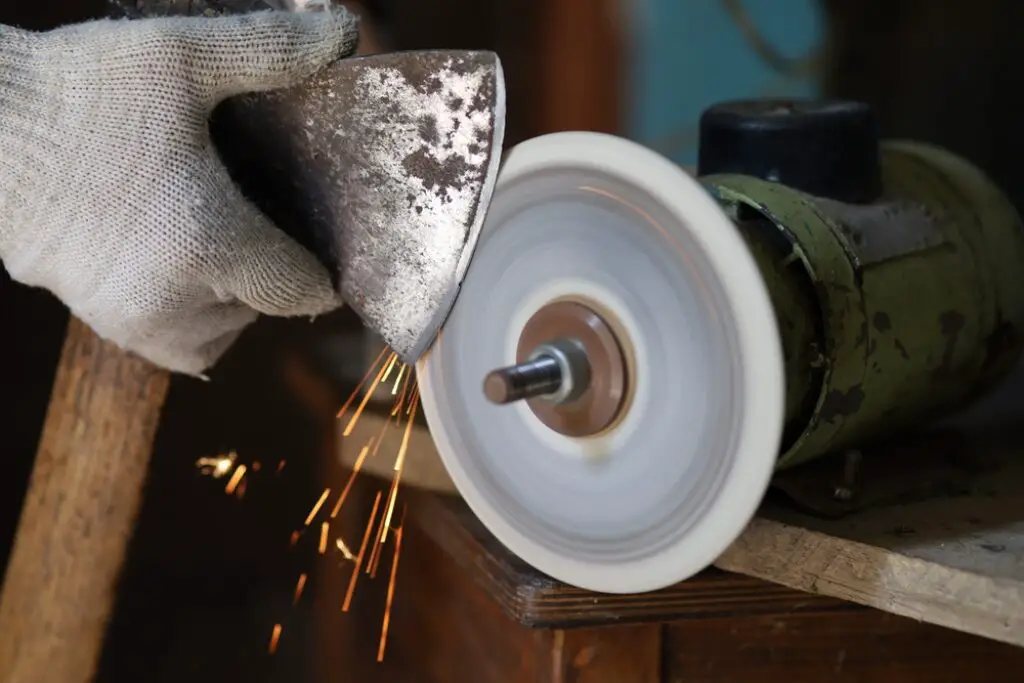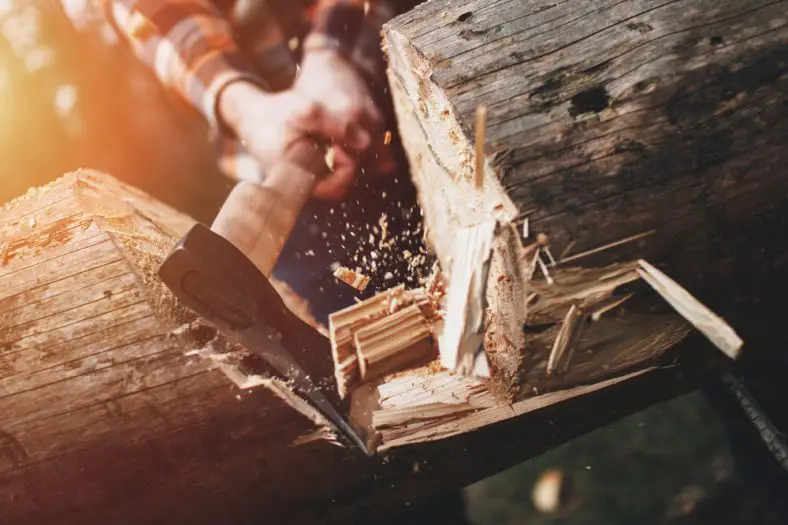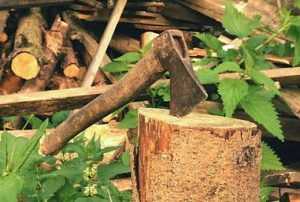Hey there, this is Jim ‘The Lumberjack’.
I’m here to teach you how to sharpen an axe, a key skill that’ll make your outdoor work a lot more efficient.
No need to wrestle with a dull edge when a bit of elbow grease and know-how can have your axe cutting clean and true. It’s all about taking your time, using the right tools, and following the grain of good sense – just like splitting a seasoned log.
So roll up your sleeves, folks, and let’s get to it—because there’s nothing quite like the feel of a well-sharpened axe in your hands.

Common Mistakes in Axe Sharpening: What to Avoid
As with anything, how to sharpen an axe can have its pitfalls. Here are a few you’d do well to avoid:
- Sharpening your axe when it’s not needed: An axe isn’t like a razor; it doesn’t need to be hair-splitting sharp. Over-sharpening can actually weaken the edge and increase the need for more frequent maintenance.
- Ignoring the angle: The bevel angle is crucial when sharpening an axe. Too steep, and you’ll end up with a durable but dull edge. Too shallow, and you’ll get a sharp but fragile edge that chips easily.
Rushing the Process: Why Patience is a Virtue in Axe Sharpening
Don’t rush when you’re sharpening an axe. You’re not just honing metal; you’re crafting an edge. The process takes time, and each step needs to be done carefully and precisely. The end result is worth the extra attention to detail.
Wrong Tool, Wrong Time: Choosing the Correct Sharpening Tool

One of the biggest mistakes in how to sharpen an axe is using the wrong tool at the wrong time. Here’s a basic guide:
- Filing: This is for when your axe edge is significantly dull or has nicks. A file removes more material and can quickly reshape the edge.
- Sharpening stone: Once your edge is shaped, the stone refines it, removing the scratches left by the file and honing a sharper edge.
- Strop: This is the final touch. It aligns any leftover microscopic burrs, giving your axe that razor-sharp edge.
Over-sharpening: A Surprising Mistake
The goal of axe sharpening isn’t to get the sharpest edge possible; it’s to get the sharpest edge that will last. Over-sharpening can lead to an edge that’s razor sharp but brittle and more prone to chipping or rolling.
Maintaining Your Axe’s Edge: Post-Sharpening Care
Just as important as the sharpening process is taking care of the axe afterwards. Here are some tips to help your axe stay sharp longer:
- Clean your axe after use: Simple, but crucial. Dirt and moisture are the enemies of your axe edge.
- Oil the axe head: This prevents rust and keeps your axe in top condition.
- Store your axe properly: Keep it somewhere dry, and cover the edge to protect it.
Proper Cleaning: Protecting Your Axe after Sharpening
After you’ve spent all that time sharpening, don’t let your hard work go to waste. Cleaning off any leftover metal filings and applying a light coating of oil protects your axe from rust and helps maintain the edge.
Storing Your Axe: Where and How to Keep Your Axe
Your axe isn’t a toy and shouldn’t be left lying around.
An axe rack or magnetic tool bar is a good option for storing your axe. This keeps the axe edge from coming into contact with anything that might dull it.
Expert Tips: Elevate Your Axe Sharpening Skills
By now, you’re probably starting to feel like a bit of an expert yourself, but here’s a couple more tips on how to sharpen an axe to really up your game:
- Always maintain control: Keep your sharpening tools and the axe steady when sharpening. Any slipping can result in an inconsistent edge or even an injury.
- Don’t forget the handle: While the axe head gets all the attention, a good handle is just as important for effective axe use.

Sharpening Angles: Finding the Sweet Spot
Every axe and usage has its ideal sharpening angle, and finding this is more of an art than a science. A general guideline is 25-30 degrees for a chopping axe, and 20-25 degrees for a carving or splitting axe. Remember, the steeper the angle, the more durable but less sharp the edge will be.
Reading the Burr: Advanced Axe Sharpening Tips
After using your sharpening stone, run your fingers carefully along the edge of the axe. You should be able to feel a slight burr or lip of metal. This indicates that the edge is fully sharpened. Once you feel this burr along the entire edge, it’s time to stop sharpening and start honing.
Regular Maintenance: Keeping Your Axe Sharp
Regular maintenance is the key to keeping your axe sharp and ready for action. Don’t wait for your axe to become dull before you decide to sharpen it.
A quick touch up after each use can make a big difference and prolong the periods between full sharpening sessions.
The Journey to Axe Sharpening Mastery
Sharpening an axe is as much about the journey as the destination. As you spend time with your axe, getting to know its quirks and temperaments, you’ll find yourself becoming more in tune with it. It becomes not just a tool, but an extension of yourself. So, remember, keep your axe sharp and it’ll never let you down. And whenever you hear the question, “how to sharpen an axe,” you’ll always have a story to tell.










